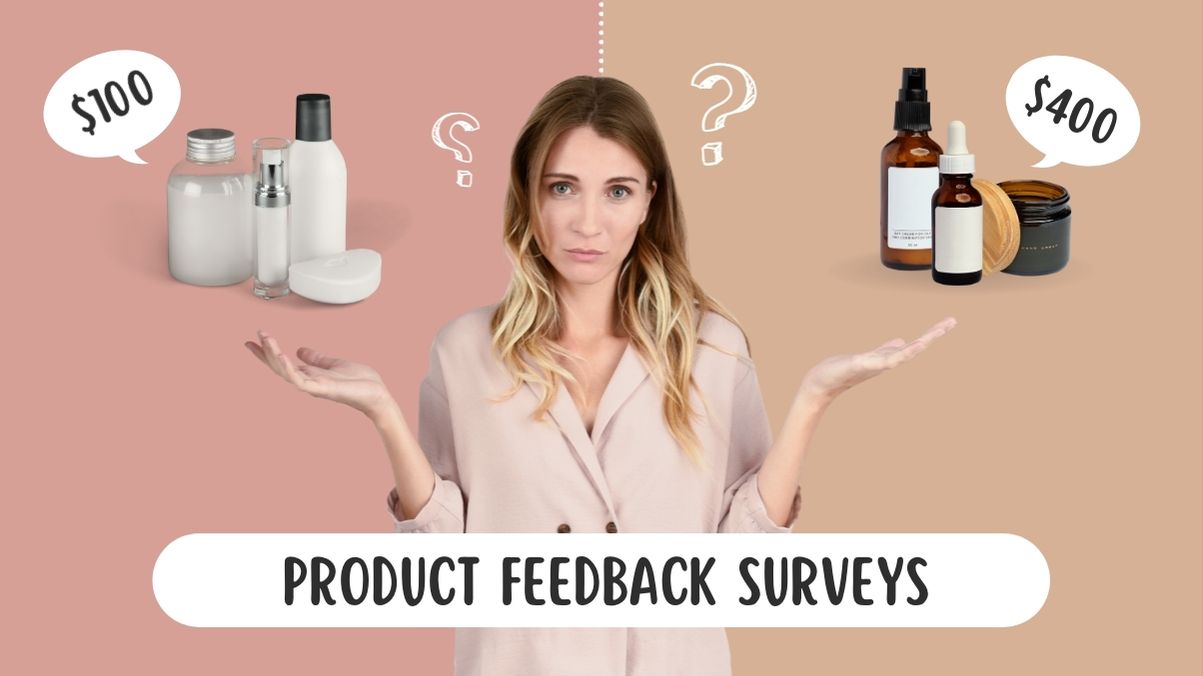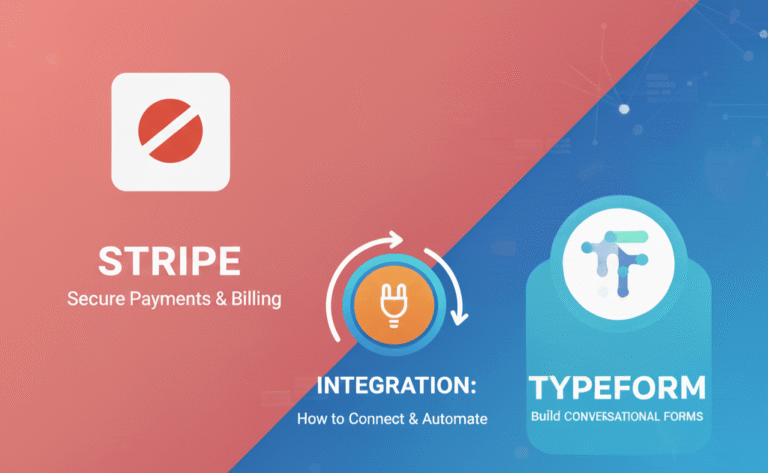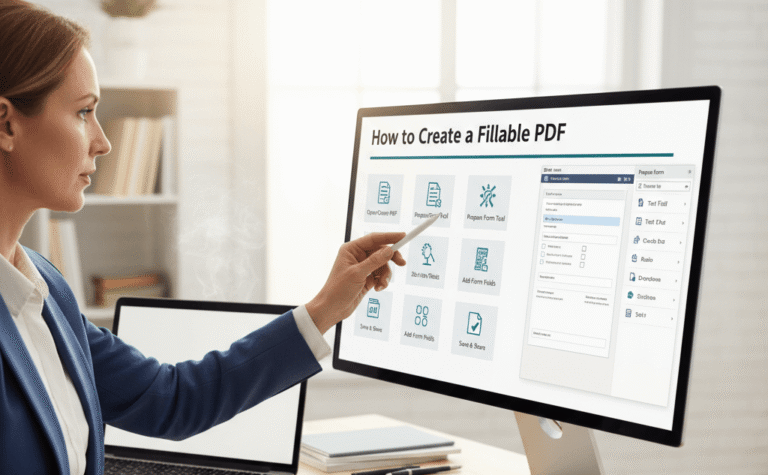Understanding customer needs is the cornerstone of product development. A product feedback survey is a structured way to capture the voices of your users and turn those insights into meaningful improvements. From beta testing a new app to refining digital tools in the education technology space, product feedback surveys guide better decision-making at every stage.
Unlike anecdotal comments or casual feedback, these surveys provide quantifiable data and structured insights. Companies can identify trends, understand feature demand, and learn what customers truly value. Whether distributed through free platforms like Google Forms or advanced solutions such as Qualtrics, feedback surveys help teams prioritize updates and improve satisfaction.
In this guide, we will explore what a product feedback survey is, how to design effective questions, best practices for beta testing, and the role of different platforms. You will also discover how My Survey Help can design customized surveys that maximize response quality.
What is a Product Feedback Survey?
A product feedback survey is a research tool designed to capture customer experiences and perceptions of a product. Unlike market research surveys that examine broad consumer trends, feedback surveys focus specifically on how users interact with a product.
These surveys are most useful across three phases:
-
Pre-launch (beta testing): Identify issues before full release.
-
Post-launch: Gather reactions from early adopters.
-
Ongoing improvement: Track satisfaction and feature adoption over time.
For example, a SaaS company may ask whether onboarding was smooth, if any features are confusing, and how users feel about pricing. A consumer goods company may use similar surveys to assess product durability, packaging appeal, or ease of use.
The value of a product feedback survey lies in its ability to reveal customer needs early, allowing organizations to pivot quickly. According to HubSpot’s product development insights, companies that use structured feedback consistently outperform competitors in product satisfaction.
If you want a deeper dive into designing professional surveys, see our Professional Survey Design Services page for custom solutions.
Product Feedback Survey Template
Using a product feedback survey template helps standardize data collection and ensures consistency across teams. Templates can be adapted to fit industries such as EdTech, healthcare, or retail.
A well-structured template often includes:
-
Demographics (optional): Age, occupation, industry.
-
Product usage: Frequency, context of use, and duration.
-
Satisfaction levels: Rating scales to capture overall impressions.
-
Feature evaluation: Ranking or prioritization of features.
-
Open-ended comments: Unstructured feedback for innovation ideas.
Platforms like SurveyMonkey and Typeform provide ready-to-use product feedback templates, while Google Forms allows basic customization. Templates save time but should not replace careful survey design. Questions must be aligned with research goals.
At My Survey Help, we customize templates to your product lifecycle. Whether you’re collecting feedback from beta testers or running large-scale EdTech surveys, we adapt templates to yield the most useful data.
For an example of how distribution matters in getting responses, check our guide on Survey Distribution Methods.
Product Feedback Survey Questions
Crafting strong product feedback survey questions is critical to generating actionable insights. Poorly worded questions lead to ambiguous answers that complicate analysis.
Examples of effective questions:
-
“How easy was it to start using this product?”
-
“Which features do you value most, and why?”
-
“What challenges have you experienced?”
-
“How would you rate the product on a scale of 1–10?”
-
“What improvements would make this product more useful to you?”
Good surveys balance closed-ended questions (e.g., rating scales, multiple choice) with open-ended ones. Closed questions make it easier to analyze large datasets, while open-ended questions reveal ideas researchers might not anticipate.
According to Qualtrics’ survey best practices (source), clear, unbiased wording ensures higher accuracy. For instance, instead of asking, “Do you love our new feature?” a neutral phrasing such as “How useful do you find this feature?” avoids bias.
At My Survey Help, we help refine questions so they align with your goals and improve clarity, ensuring high-quality responses from your target audience.
Beta Product Feedback Survey Template
A beta product feedback survey template captures insights from early testers before a product’s full release. This stage is crucial because fixing problems post-launch is expensive.
A beta template should explore:
-
First impressions: How intuitive is the design?
-
Performance: Speed, reliability, and bugs.
-
Feature usefulness: Which features stand out, which fall short.
-
Engagement: Would testers use the product regularly?
-
Suggestions: What is missing or confusing?
For example, an EdTech app may ask beta testers about mobile performance and integration with school systems. By analyzing responses early, developers can prevent user drop-off.
Nonprofit Quarterly (source) emphasizes that engaging stakeholders during beta stages increases long-term adoption rates.
By using structured beta surveys, companies can make informed launch decisions, ensuring their products meet expectations right from day one.
Digital Product Feedback Surveys
Digital product feedback surveys dominate modern feedback collection due to their scalability and cost-effectiveness. These surveys are distributed via email, websites, or in-app notifications.
Digital formats enable:
-
Real-time insights: Data flows instantly to dashboards.
-
Broader reach: Global participants can join without physical barriers.
-
Automation: Responses integrate with CRM and analytics tools.
However, challenges exist. Poor timing may frustrate users—such as prompting feedback during critical app tasks. Additionally, overly long surveys reduce completion rates.
Best practices include keeping surveys short (no more than 10 questions), offering optional incentives, and ensuring mobile responsiveness. Statista’s reports on digital survey trends show that mobile-optimized surveys achieve significantly higher response rates.
At My Survey Help, we design digital surveys that balance accessibility with depth, helping companies gain insights without overwhelming their users.
Product Feedback Surveys in EdTech
EdTech companies rely on product feedback surveys to evaluate how students, teachers, and administrators use digital tools.
Typical questions include:
-
“How effective is the tool for achieving learning outcomes?”
-
“What barriers exist to classroom adoption?”
-
“Which features support or hinder lesson delivery?”
Feedback helps identify technical issues (like poor mobile performance) and content challenges (such as unclear instructions). For administrators, surveys provide evidence of ROI, making product adoption easier.
According to EdSurge (source), integrating regular feedback loops into EdTech design ensures higher engagement.
At My Survey Help, we specialize in crafting surveys tailored to EdTech products, ensuring educators and learners provide actionable input.
Product Feedback Survey Creator – My Survey Help
A product feedback survey creator must do more than provide a simple template. It requires expertise in survey design, customization, and analysis.
At My Survey Help, we:
-
Customize survey templates for beta, EdTech, or consumer products.
-
Create targeted distribution strategies.
-
Apply advanced statistical tools to analyze data.
-
Provide detailed reports to support decision-making.
If you want a professional survey that delivers actionable insights, request a quote today.
Product Feedback Survey Platform
SurveyMonkey
SurveyMonkey offers professional templates and customizable features for scaling surveys. It’s widely used for product testing across industries.
Qualtrics
Qualtrics is suited for advanced feedback analysis, including predictive insights. It’s a go-to for enterprises needing complex data.
Typeform
Typeform’s conversational style increases engagement. This makes it ideal for consumer-facing product surveys.
Google Forms
For startups, Google Forms offers a free option. If you’re unsure how to create a Google Form for product feedback survey, it’s simple: choose a template, add product-specific questions, and share the link. Results integrate seamlessly with Google Sheets.
Prolific
Prolific, often used in academic research, can also provide beta product feedback by connecting with targeted participant pools.
Best Practices for Product Feedback Surveys
Key practices include:
-
Defining goals clearly.
-
Keeping surveys concise.
-
Mixing closed and open questions.
-
Offering incentives.
-
Sharing results with participants.
These approaches increase participation and improve data quality.
Conclusion
A product feedback survey helps companies align products with customer expectations, refine features, and ensure success. From beta templates to EdTech-specific surveys and platform choices, feedback plays a vital role in growth.
If you want surveys designed with precision and backed by expertise, partner with My Survey Help. Request a free quote here and let our team create feedback surveys that deliver results.







